1 Provenience. All of the specimens we examined were curated in the Institute of Archaeology and Ethnology, Novosibirsk. While some specimens had no provenience labels, these few were always bagged with pieces that were labeled for year of excavation and section number. The dates include 1973, 1974, 1976, and 1977. The specimens had been sorted into bags according to identifiable species, and bags of unidentifiable pieces. In addition to section numbers, some pieces were also numbered for Ovodov’s specimen catalogs. Hence, our observations are based on the excavations led by Okladnikov and do not include the later work directed by Lbova. We examined 864 pieces, disregarding most unmodified loose teeth and foot bones. Our total was at least one-quarter of the collection. The excavations in the 1970s did not find the microblade horizon, so there was no reason not to pool our observations.
2 Species. Table A1.2 (site 27) shows that all 864 pieces were assessed for species determination (precise or general, i. e., big or small mammal, etc.). Indeterminable pieces made up 18.6% of the total, a value not too dissimilar fTom that of the nearby Kamenka site (21.9%). Gazelle (32.3% pieces) was the most commonly represented species, followed by horse (17.1%). Rhinoceros (6.0%), goat-sheep (4.4%), wolf (1.6%), bison (0.2%), hare (0.1%), and mammoth (0.1%) are also represented. The relatively large percentage for rhinoceros is due to there having been discovered much if not all of a single animal at Varvarina Gora. It had cut and chop marks indicating butchering.
In Ovodov’s 1987 study he also identified marmot, fox, korsak, bear (a single tooth), yak, screw-horned antelope (three pieces of horn), and found a few pieces of bird bone that he did not identify. He remarked that the mammoth reported in the literature by Okladnikov was represented by ivory objects only. Ovodov felt that mammoth presence at Varvarina Gora was not the result of human hunting.
Kalmykov (2000) notes that carnivores were quite rare in the late Pleistocene Lake Baikal basin. They are rare at Varvarina Gora and Kamenka as well.
3 Skeletal elements. Our element sample size was 864 pieces (Table A1.3, site 27). Nonspecific long bone pieces were the most common (12.4%), followed by rib pieces (11.6%). These values are nearly identical to those at nearby Kamenka (12.7% and 11.4%, respectively), although there are not quite as many cranial pieces (8.3%) as identified at Kamenka (12.5%). Still, these correspondences are increased by the presence of penis bones in both sites, and almost nowhere else in our other assemblages.
4 Age. Our sample size forage assessment was 864 pieces (Table A1.4, site 27). Adults were about five times more common than sub-adults. This age ratio is nearly identical to that found at Kamenka, so all the comparative comments there apply here as well.
5 Completeness. We had 863 usable pieces (Table A1.5, site 27). Whole pieces (3.4%) were similar in number but fewer than at Kamenka (8.7%); however, considering that we may have possibly excluded ITom study proportionally a few more Varvarina Gora whole bones, this difference is viewed as unimportant. Certainly, the ratio of one-ended to no-ended pieces in the two sites is similar, although there is a slightly significant statistical difference (x2 = 5.4, 1 d. f., 0.01 <p <0.05). Varvarina Gora does not stand out for completeness when compared to our other assemblages.
6 Maximum size. The average size for 847 usable pieces is 9.0 cm (Table A1.6, site 27). This is larger than the mean for Kamenka (6.5 cm), which is entirely attributable to the several very large pieces of the rhinoceros found at Varvarina Gora. Removing those pieces reduces the Varvarina Gora mean considerably. However, with the rhinoceros pieces included, Varvarina Gora has a mean maximum diameter that is in the upper half of the size range for our pooled assemblage.
7 Damage shape. We evaluated this variable on the basis of 862 pieces (Table A1.7, site 27). Most frequent were long bone fragments (30.3%) and long bone flakes (13.8%). The number of long bone splinters was significantly less (x2 = 98.8, 1 d. f., p <0.001) at Varvarina Gora (3.4%) than at Kamenka (11.4%). The suggestion by Germonpre and Lbova (1996:44) that the Kamenka splinters “could be the byproducts of bone tool manufacturing” is reasonable but would have been strengthened had Varvarina Gora had a similar proportion of splinters, given the many other taphonomic similarities in the two sites.
8 Color. Color was assessed in 862 pieces (Table A1.8, site 27). Almost all of the pieces were ivory colored (99.2%). Pieces that were burned or possibly burned (brown or black) made up only 0.7% of the total. One was a partly burned, mostly whole horse vertebra. This vertebra is the only possible piece that might suggest roasting, although it more likely represents accidental burning. The occurrence of ivory colored pieces in Varvarina Gora and Kamenka (98.9%) is identical. Compared with our other assemblages, Varvarina Gora is at the very upper end of the ivory colored range.
9 Preservation. Quality could be evaluated in 863 pieces (Table A1.9, site 27). While the majority of pieces were ivory hard (65.3%), there were many pieces of chalky and intermediate quality (Fig. 3.185). There is a highly significant quality difference between Varvarina Gora and Kamenka (x2 = 1270. 3,1 d. f., p <0 .001). The preservation difference is likely due to Varvarina Gora’s coarser-grained sediments, southern exposure, and hillside slope - conditions the combination of which must have led to more humic acid percolation, more and deeper ground freezing and thawing, and a longer period of surface weathering before final burial. In addition, the many highly weathered rhinoceros bones indicate that they had been exposed to surface weathering for a relatively long period of time. Varvarina Gora quality is much like that of other open sites. It is Kamenka that has the unusually high quality of preservation for an open site.
10 Perimortem breakage. We could assess 862 pieces for perimortem damage (Table A1.10, site 27). Like nearly all of our sites, Varvarina Gora has a very high frequency of
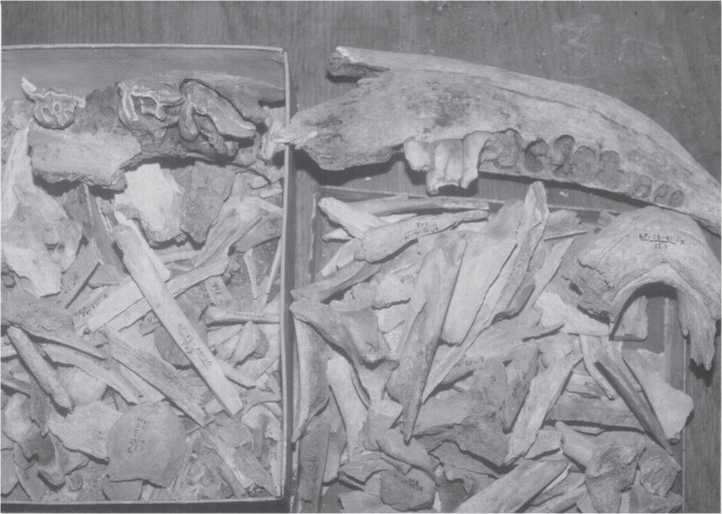
Fig. 3.185 Varvarina Gora, rhinoceros. Preservation was poor for a complete animal found at the site. Like desert conditions, those at this site caused bone to become largely chalk, which crumbles and breaks easily, unlike in the dry Altai caves, where the organic component of bone remains for millennia (CGT color IAE 7-30-03:35).
Perimortem breakage (97.0%). This amount of breakage is only slightly more than that found at nearby Kamenka (94.7%). While the difference is statistically significant (X2 = 4.95, 1 d. f., 0.01 <p <0.05), it is just barely so. Given the previous discussion of the very significant bone quality differences (i. e., arising fTom environmental and depositional history) between Varvarina Gora and Kamenka, we feel that the manner in which these ancient humans extracted nutrients from game animals and their use ofbone for fabricational purposes was effectively the same in both sites. This view is backed up by the lack of color difference in these two sites, i. e., little or no evidence for roasting that would scorch or blacken bone.
Compared with our other assemblages, Varvarina Gora is not unusual with respect to perimortem damage.
11 Postmortem breakage. We evaluated 862 pieces for postmortem damage (Table A1.11, site 27). Of these, 9.6% showed postmortem breakage. Much of this happened in the excavation of the adult rhinoceros, most of whose skeleton was crumbly and chalky due to weathering and poor preservation. Even so, there is much more postmortem breakage at Varvarina Gora than at nearby Kamenka (1.1%). The difference is so large that there is no need for a formal statistical test. Relative to our other assemblages, the postmortem breakage is not so much unusual for Varvarina Gora than it is due to the exceptionally good preservation at Kamenka. Varvarina Gora is near the middle of the postmortem breakage range for all our assemblages.
12 End-hollowing. Due to the large number of pieces without anatomical ends, we could assess only 418 pieces for end-hollowing (Table A1.12, site 27). End-hollowing occurs in 1.2% of the Varvarina Gora sample, a value not significantly different fTom that of Kamenka (0.8%) (x2 = 0.19, 1 d. f., p >0.5). Hence, discussion of Kamenka regarding our objective of developing multiple criteria for defining carnivore damage applies here also. By itself, end-hollowing does not suggest much carnivore activity at these two sites.
Compared with our other assemblages, especially those where there had been an unquestionable presence of hyenas, Varvarina Gora end-hollowing is decidedly at the very low end of the range of occurrence. The presence of wolf bones at Varvarina Gora may not point to their having caused the end-hollowing, because Ovodov (1987a) suggested that the occurrence and types of several wolf bones, as well as their breakage, indicates that these animals may have been hunted for food as well as fur. On the other hand, carnivores that caused the end-hollowing are likely not represented in the Varvarina Gora assemblage, so scavenging wolves and foxes could still have produced the small amount of end-hollowing.
13 Notching (Fig. 3.186). Our sample for notching consisted of 856 pieces (Table A1.13, site 27). Of these, 5.7% had one or more notches. The most fTequent number of notches per piece was one (4.2%). Occurrence and intensity of notching is less than at
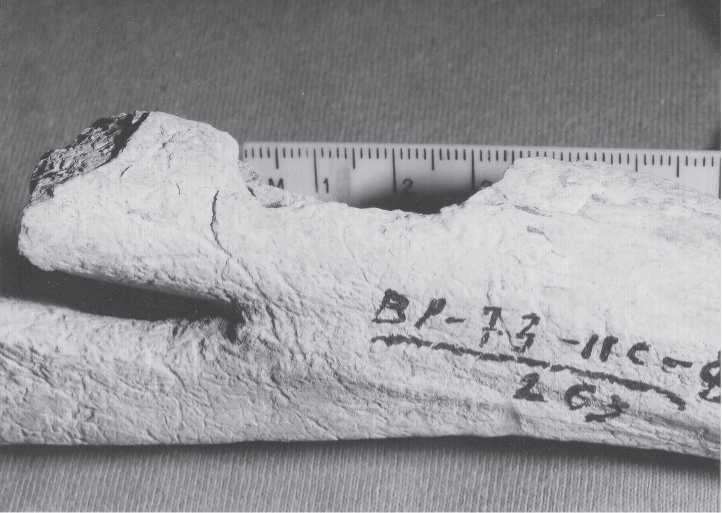
Fig. 3.186 Varvarina Gora, bone damage. Horse radius with large impact notch, external view. Root damage and soil erosion are extensive (CGT neg. IAE 7-30-03:20).
Kamenka (9.8% occurrence). Although the difference is statistically significant (X2 = 8.32, 1 d. f., 0.001<p < 0.01), we do not believe that it signals any special manner of cultural or taphonomic importance because chalky pieces with crumbly edges would not be scored as notched in the face of uncertainty caused by possible postmortem damage. Compared with our other assemblages, notching at Varvarina Gora is unexceptional for an open site. It clearly had less notching than the amount associated with hyenas and other carnivores.
14 Tooth scratches. We were able to assess the occurrence of tooth scratches in 703 pieces (Table A1.14, site 27). Only 1.9% had one or more scratches. The most frequent number of scratches per piece was five (0.4%), but two pieces had more than seven scratches. Occurrence and intensity of tooth scratches is slightly less than at Kamenka (2.8% occurrence), but the difference is not statistically significant (x2=1.1, 1. d. f., 0.2 <p <0.5). As far as tooth scratches alone indicate carnivore activity, bone refuse at the two sites was processed similarly. Compared with our other assemblages, Varvarina Gora tooth scratching is unexceptional for an open site, and has much less than in the carnivore cave sites.
15 Tooth dints (Fig. 3.187). A total of 682 pieces could be evaluated for tooth dints (Table A1.15, site 27). Only 1.9% had one or more dints. The most frequent number of dints per piece was three (0.6%), and only one piece had more than seven dints. Occurrence and intensity of tooth dints is less than at Kamenka (3.3%), but the difference
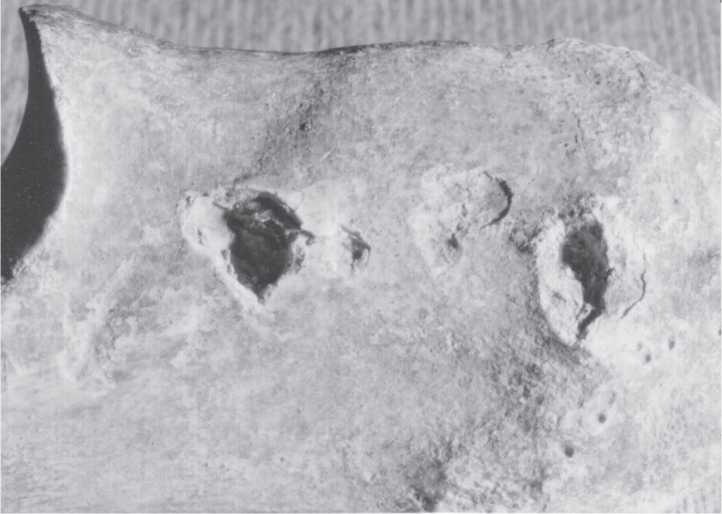
Fig. 3.187 Varvarina Gora, bone damage. Gazelle ulna (1976) with tooth dints. Tiny embedded fragments are in the right dint. Width of image is 3.3 cm (CGT neg. IAE 7-30-03:1).
Is not statistically significant (X = 2.41, 1 d. f., 0.05<p<0.2). Our comments for tooth scratching apply equally to tooth dinting - namely, there is only a small amount of carnivore damage that can be inferred for Varvarina Gora.
16 Pseudo-cuts. We could identify no examples of pseudo-cuts in all 689 usable pieces. This again reflects a minimum of carnivore processing of Varvarina Gora bone refuse.
17 Abrasions. In 686 pieces, only 0.4% had one or more abrasion grooves per piece (Table A1.17, site 27). This is practically the same as seen at Kamenka (0.2%), for which we earlier proposed that bone breakage for marrow extraction was accomplished mainly with the use of non-abrasive hammers and anvils such as bone, antler, or wood instead of gritty abrasion-producing hammer stones and anvil stones. Stone could well have been used for bone breakage, but it would have had to have been fine-grained so as not to leave abrasion grooves.
A low frequency of abraded pieces is characteristic of all the assemblages in our study. Given the generally coarse - to medium-grained stone sources that we have noticed in all the site areas visited, there seems to be a reasonable basis for proposing that stone was not the major material used in the perimortem bone breakage.
18 Polishing. A total of 834 pieces could be assessed for polishing (Table A1.18, site 27). Polishing was very common in Varvarina Gora (96.0%). At Kamenka there was less (90.0%), the difference in which is statistically significant (x2 = 20.19, 1 d. f.,p <0.001). The difference is attributable to slope, where some polishing was possibly caused by bone movement downhill, since the amount of slope at the time of deposition seems to have been a few degrees greater at Varvarina Gora than at Kamenka. Also, because the proportion of chalky pieces is greater at Varvarina Gora than at Kamenka, bone refuse at Kamenka was better protected from weathering, which implies less time passed before burial, and once buried the perimortem and postmortem polishing processes were less energetic. Compared with our other assemblages, Varvarina Gora is decidedly at the upper end of the range for polishing. This range does not break down as neatly for open versus cave sites as do some other variables.
19 Embedded fragments. We were able to assess embedding in 858 pieces (Table A1.19, site 27). There were very few pieces that had embedded fragments (0.9%). Of these, having two embedded fragments was most common (0.3%). There were no pieces with more than four embedded fragments. Kamenka had a similarly low occurrence of pieces with embedded fragments (1.5%). Compared with our other assemblages, Varvarina Gora is at the low end of the range for embedded pieces.
20 Tooth wear. We evaluated tooth wear on 36 pieces of tooth-bearing bone (Table A1.20, site 27). Individuals we considered to be young made up 13.9% of this total. Kamenka had almost half this amount, but both assemblages are too small for meaningful chi-square comparisons. Compared with our other samples, Varvarina Gora would appear to be at the low end of the range for the presence of young individuals.
21 Acid erosion. We could assess 864 pieces for acid erosion (Table A1.21, site 27). Only 0.5% of this total had acid erosion. Of the four eroded pieces, three were highly
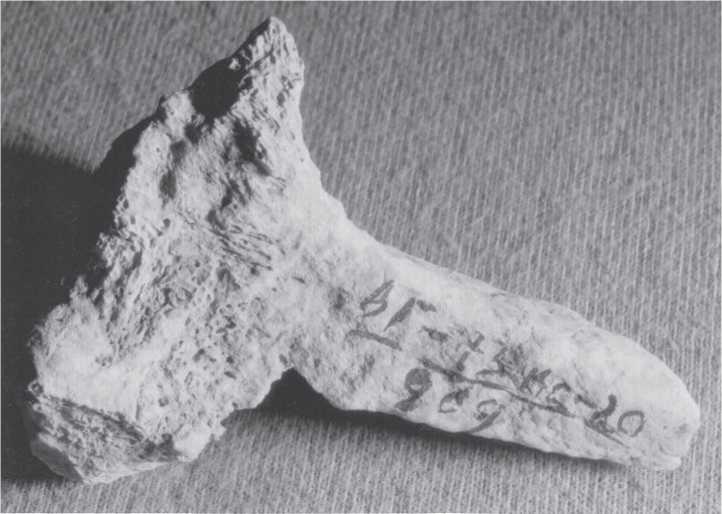
Fig. 3.188 Varvarina Gora, bone damage. Gazelle proximal tibia fragment, with soil damage that has
Partly obscured condition, that was likely a hyena stomach bone. Maximum length is 6.1 cm (CGT neg. IAE 7-30-03:27).
Rounded, like water-worn pebbles. The fourth was highly eroded, but gritty rather than greasy feeling (Fig. 3.188; see 3.193, 3.194). None is completely like the digestive damage seen in the hyena cave assemblages. In addition, there were two other pieces that were corroded on one surface, as if they had been in the process of dissolving by some agency other than stomach acid. These two were not considered as having digestive damage. The 0.5% of acid-eroded pieces is somewhat less than occurred at Kamenka (1.3%), but not significantly so (x2 = 2.85, 1 d. f., p >0.08). Compared with our other assemblages, Varvarina Gora is at the low end of the range for acid erosion.
22-24 Rodent gnawing, insect damage, and human bone. Varvarina Gora had no examples of these considerations.
25 Cut marks (Figs. 3.189-3.192). We could assess 714 pieces for cut marks (Table A1.25, site 27). Fully 8.8% of all pieces had one or more cut marks. The number of cuts per cut piece range more-or-less equally fTom one to more than seven. The largest number of cut marks on a given Varvarina Gora piece is 15. There is one 15.8 cm long piece of a distal end of an adult horse humerus with five ultra-fine cut marks varying fTom 2.0 to 5.0 cm in length. The piece is extraordinarily well preserved, equal to that found in cave sites, suggesting that other very fine cut marks may have been erased from less well-preserved pieces. This in turn suggests that we have to some degree underestimated cutting in Varvarina Gora and perhaps other open sites where preservation is not as good
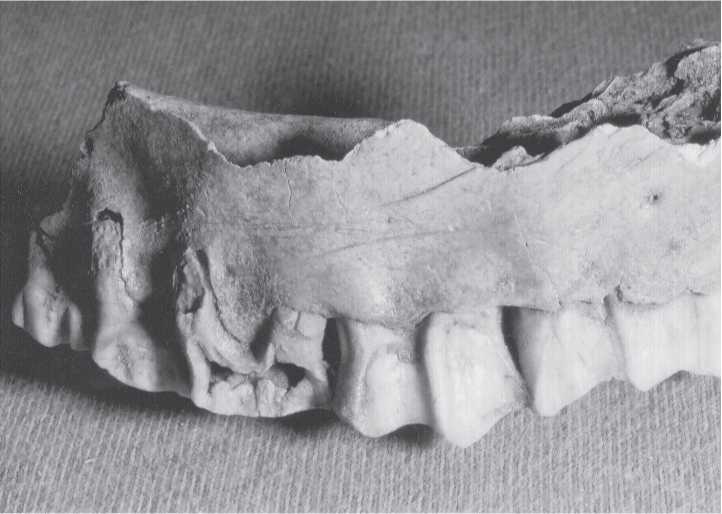
Fig. 3.189 Varvarina Gora, bone damage. Cut marks on gazelle maxilla. The third tooth from the right was broken in life and shows subsequent wear on the fTacture (CGT neg. IAE 7-30-03:24).
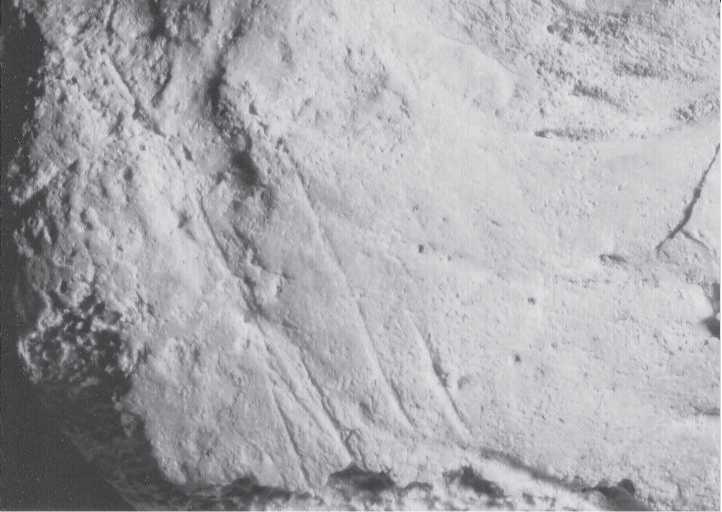
Fig. 3.190 Varvarina Gora. Horse distal tibia with growth lines that resemble cut marks. Width of image is 3.3 cm (CGT neg. IAE 7-30-03:28).
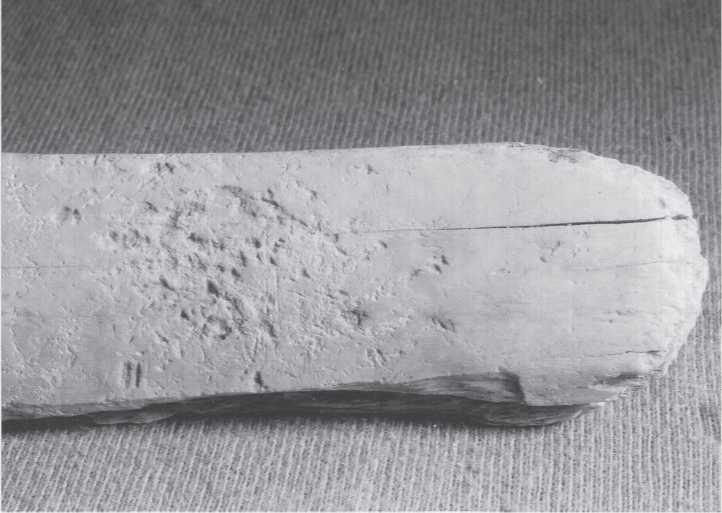
Fig. 3.191 Varvarina Gora, bone damage. Horse (?) rib fragment with chop and cut marks, abrasions and rounded end. A sort of anvil or cutting board. Possibly used in stone tool production. Width of image is 6.8 cm (CGT neg. IAE 7-30-03:30).
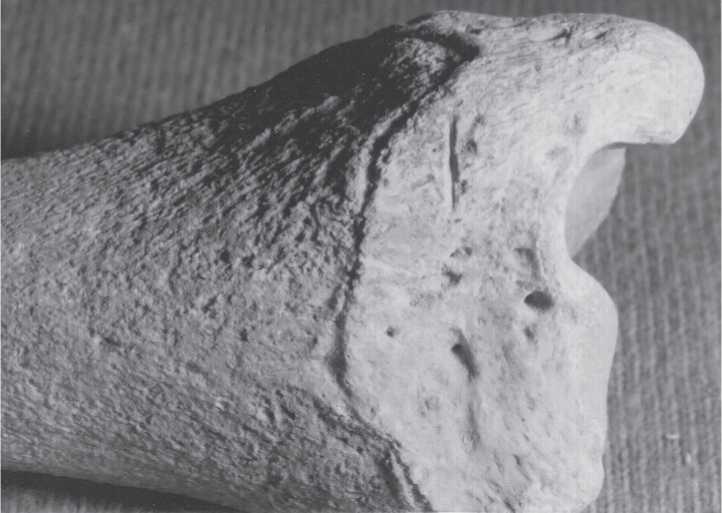
Fig. 3.192 Varvarina Gora, bone damage. An immature wolf tibia with a cut mark on the distal joint. In all of the food refuse recovered at Varvarina Gora and all of the other sites presented in this volume, there is no suggestion that wolves were used as a food source. Ovodov suggests that they were hunted for their fur. Width of image is 3.3 cm (CGT neg. IAE 7-30-03:26).
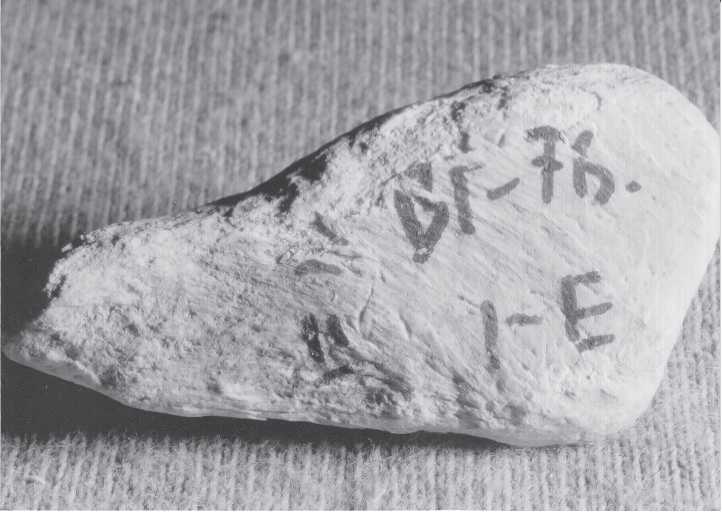
Fig. 3.193 Varvarina Gora, bone damage, stomach bone. Insofar as can be determined, there is no direct evidence of hyenas in the Varvarina Gora assemblage. Hence, a wolf may have defecated or regurgitated this stomach bone. Width of image is 3.3 cm (CGT neg. IAE 7-30-03:12).
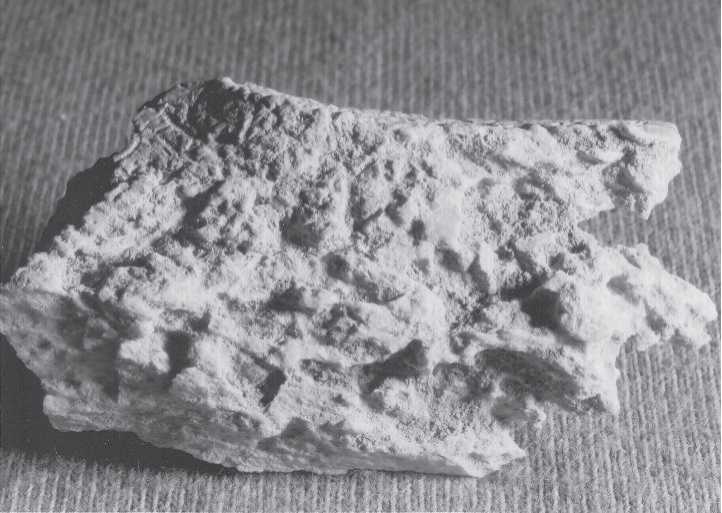
Fig. 3.194 Varvarina Gora, bone damage. The surface texture of this piece lacks the “greasy” feel of nearly all stomach bones. However, the appearance matches. It is possible that the piece was originally a stomach bone whose surface polish was eroded by soil conditions. Width of image is 3.3 cm (CGT neg. IAE 7-30-03:7).
As in most cave sites. Nearby Kamenka has a slightly higher frequency of cut marks (9.5%), but the difference is not significant (x2 = 0.18, 1 d. f., p >0.3). As related earlier, Kamenka bone was excellently preserved, so if we are under-counting cut marks it does not show up in these two neighboring sites with notable preservation differences.
Compared with our other assemblages, Varvarina Gora is more-or-less in the middle of the range for cut mark frequency.
26 Chop marks. There were 747 pieces that could be evaluated for chop marks (Table A1.26, site 27). Of these, 13.8% of all pieces had one or more chop marks. Of chopped pieces, the majority (8.6%) had only one chop mark. Two chop marks were less common (2.9%), and only a few other pieces had 3-6 grooves due to chopping. The occurrence of chop marks at Kamenka was less (8.6%), and most of these were pieces with only one chop mark. The frequency difference in the occurrence of chop marks at Varvarina Gora and Kamenka is significant (x2 = 8.94, 1 d. f.,p < 0.005). We suggest that this difference is due to Varvarina Gora having proportionally more pieces of large mammals (horse, rhinoceros, “big”) than Kamenka. Certainly, the large mammal pieces at Varvarina Gora have more chop marks than do pieces of smaller mammals. Moreover, Varvarina Gora shows a large number of pieces with associated chop marks and notching. It would seem that gaining access to the marrow cavity of large mammals like horse and rhinoceros was more commonly accomplished by the use of large, heavy, sharp-edged stone artifacts like the Varvarina and Kamenka cores illustrated by Lbova (2002:65-66) than by hammering with a non-lithic piece of bone, horn, or wood. Conceivably, the choice of material illustrates ancient awareness of the “stiletto heel effect” in which a great deal of kinetic energy can be focused on a small area, causing great damage that might not occur when the impacting surface has more area.
Compared with our other assemblages, Varvarina Gora is in the upper part of the range for chop mark frequency.
As mentioned in “background,” there were two cultural levels in Varvarina Gora. Figs. 3.195-3.198 illustrate some stone artifacts fTom both levels.




 World History
World History









